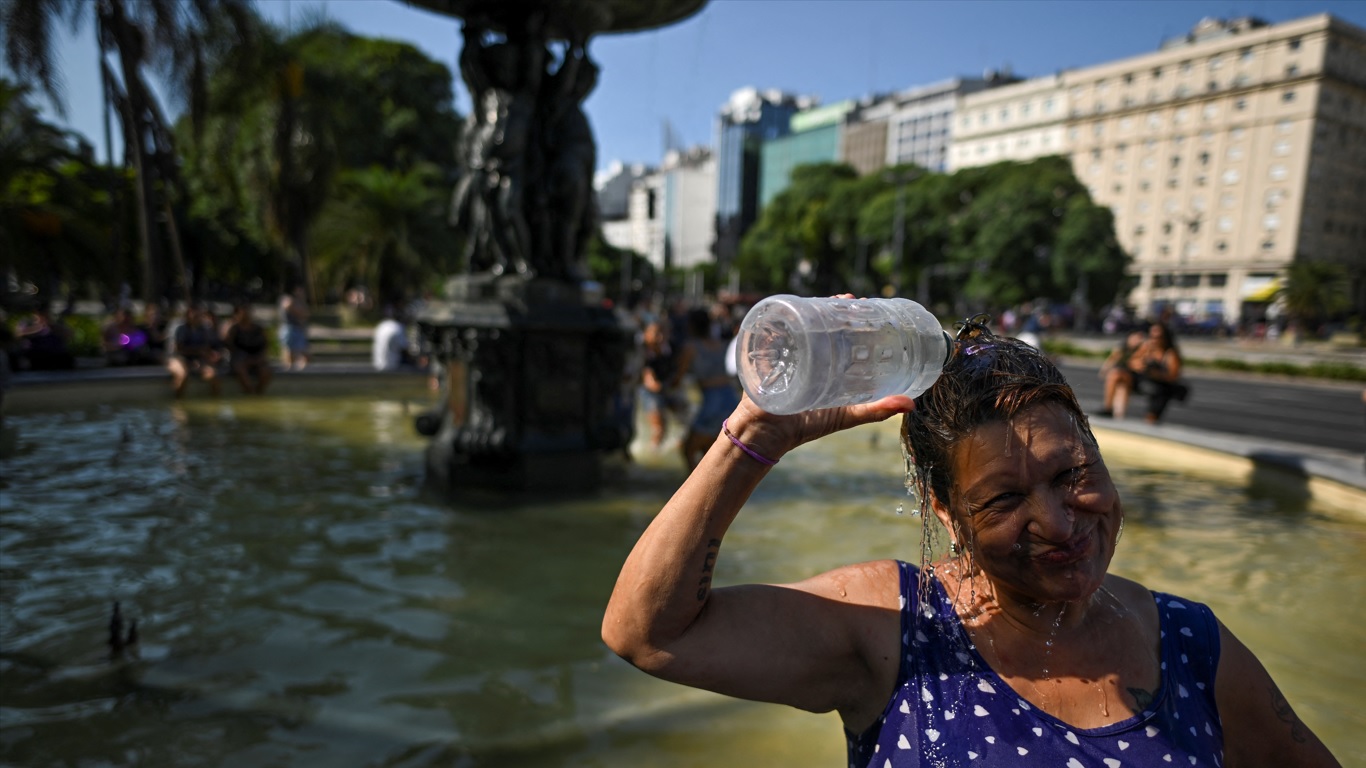
Buenos Aires residents do their best to stay cool amid a heatwave of unprecedented duration and intensity this March | Luis Robayo/AFP/Metsoul Metrology
The city of Buenos Aires smashed its highest temperature for March for the second time this month amid a severe and historic heat wave unprecedented for this time of year in the region. And what happens next The hottest summer climate in history.
in the next day The temperature reached 38.0 degrees Celsius in the Argentine capital. It was, then, the highest mark observed in March since measurements began in 1906 in the city. The mark surpassed the previous record of 37.9 °C on March 7, 1952.
If the record from the 1950s has stayed the same for 70 years, the record from March 2 of this year only lasted ten days. This is because today’s maximum has exceeded what was recorded ten days ago, as the heat intensifies in central Argentina.
On Saturday (11) the maximum temperature at the Central Observatory of Villa Ortozar, the historic reference station for the city of Buenos Aires, reached an impressive 38.9 degrees Celsius.
The intensity of the heat today is so out of line that not only is it a new record for Buenos Aires in March, but Saturday’s maximum was higher than the record February maximum of 38.7°C set in 1944.
a Argentina has been experiencing a continuous series of heat waves since late spring.. In the past decade, there were no more than four or five similar episodes per season, according to the National Weather Service, and the country is currently facing its ninth or tenth heat wave, depending on location.
Ezeiza International Airport in Greater Buenos Aires recorded a maximum of 39.6°C today. This is the fourth time that Ezeiza has set a record in March. Yesterday, Aziza’s maximum temperature was 39.4°C. It was the third time this month that the station’s maximum temperature record for March fell. The March record was broken on the first day with 38.1°C and on the second day with 39.1°C.
Multiple extreme temperature records since 1961, some for the entire historical series with data going back a century or more, have been broken by March climatology since the beginning of the month in Argentina.
There was a red alert on Saturday for the city of Buenos Aires and part of Greater Buenos Aires issued by Argentina’s National Meteorological Service (SMN) for extreme heat. There have been several days this month with a red alert in the Argentine capital due to high temperatures in a very unfamiliar situation.
“With the intensification of the South Atlantic anticyclone on the surface, which contributes to the northerly winds and humidity in the center of the country, and the conditions of atmospheric blocking at the middle and high levels of the atmosphere over the central strip of the Argentine territory, cold air does not enter the region, however, degrees remain The heat is very high for this time of year with a severe and late heat wave,” SMN explained.
What is happening in central argentina is Outside the historical and abnormal curve. The maximum temperature in the north of Buenos Aires Province, including the federal capital, is between 8 and 10 degrees Celsius above normal this month so far. To put it in context, a ten-day period that’s 4°C to 5°C warmer than average, but an 8°C to 10°C positive anomaly is something unusual.



![[VÍDEO] Elton John’s final show in the UK has the crowd moving](https://www.lodivalleynews.com/wp-content/uploads/2023/06/Elton-John-1-690x600.jpg)

More Stories
A South African YouTuber is bitten by a green mamba and dies after spending a month in a coma
A reptile expert dies after a snake bite
Maduro recalls his ambassador to Brazil in a move to disavow him and expand the crisis